
Find Help
More Items From Ergsy search
-

How is progress measured for SEND children?
Relevance: 100%
-

What are SEND children?
Relevance: 75%
-

Who are SEND children?
Relevance: 70%
-

Do SEND children attend mainstream schools?
Relevance: 68%
-

What support is available for SEND children in schools?
Relevance: 63%
-
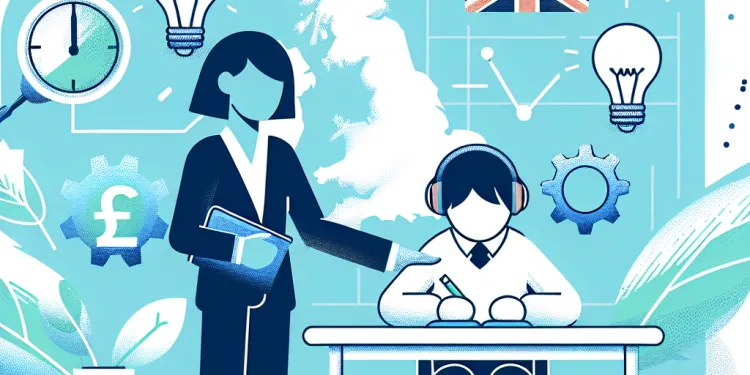
What role do teachers play in supporting SEND children?
Relevance: 62%
-

Can SEND children access extracurricular activities?
Relevance: 61%
-

What support is available outside of school for SEND children?
Relevance: 59%
-

How can schools create an inclusive environment for SEND children?
Relevance: 57%
-

Can SEND status change over time?
Relevance: 50%
-

How are parents involved in the SEND process?
Relevance: 50%
-

Are there specific laws governing SEND in schools?
Relevance: 47%
-

Who is responsible for assessing SEND needs?
Relevance: 47%
-

What does SEND stand for?
Relevance: 45%
-

What are some common misconceptions about SEND?
Relevance: 44%
-

How do funding and resources affect SEND support?
Relevance: 42%
-

What are some common types of SEND?
Relevance: 41%
-

How do I send books or magazines?
Relevance: 40%
-

Can I send money to an inmate?
Relevance: 39%
-

How can I track my walking progress?
Relevance: 36%
-

Why does my email appear to be sending spam?
Relevance: 36%
-

What items can I send to someone in prison?
Relevance: 36%
-

How does dementia progress over time?
Relevance: 35%
-

How can parents advocate for their SEND child?
Relevance: 34%
-

What are the career progression opportunities for NHS nurses?
Relevance: 32%
-
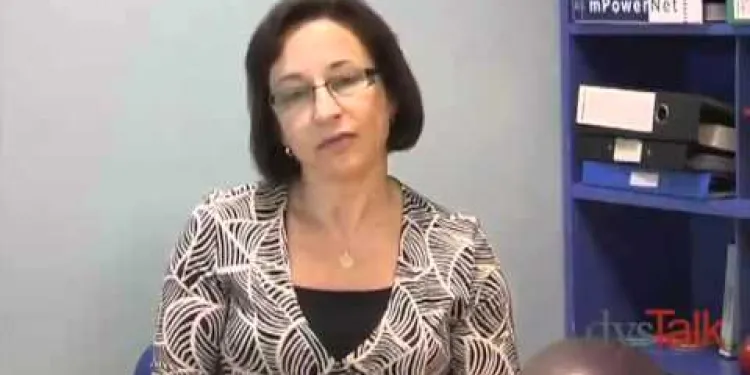
Dyspraxia Children: How to Help
Relevance: 32%
-

Can lifestyle changes impact motor neurone disease progression?
Relevance: 32%
-

How can I identify if my child has SEND?
Relevance: 31%
-

What is the typical progression of Marburg virus disease?
Relevance: 31%
-

Is tooth decay common in children?
Relevance: 30%
-

What is the SENCO's role in a school?
Relevance: 29%
-
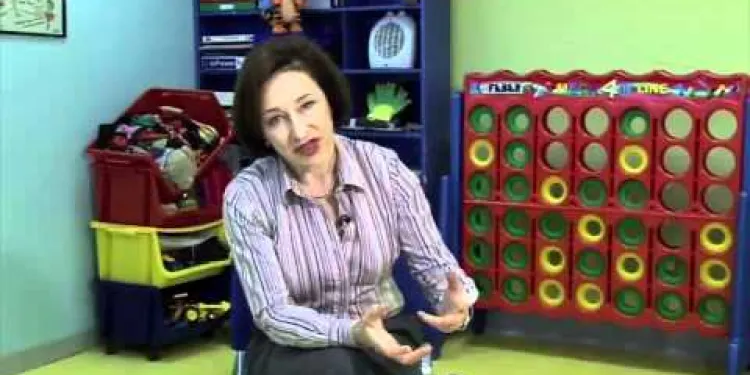
Helping Children With Co-ordination Difficulties
Relevance: 29%
-

Can Wegovy be used by children?
Relevance: 28%
-
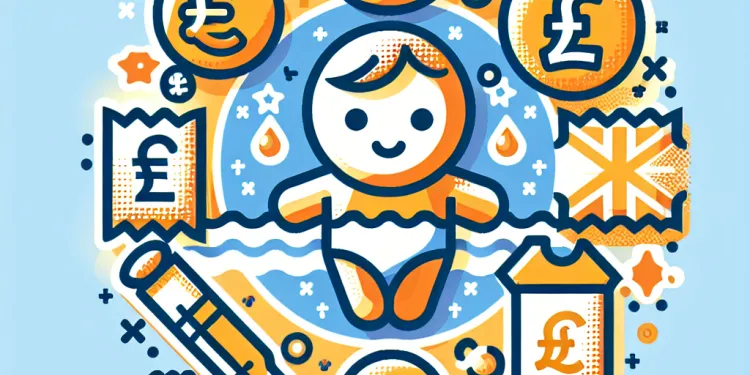
Is Baxdrostat suitable for children?
Relevance: 28%
-
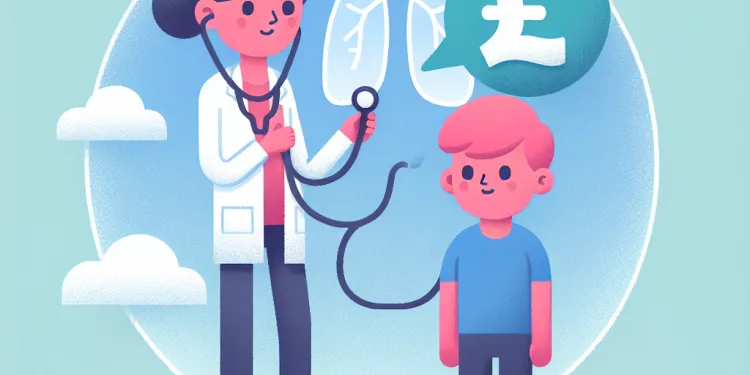
What is lupus in children?
Relevance: 28%
-

Lupus in children | NHS
Relevance: 28%
-
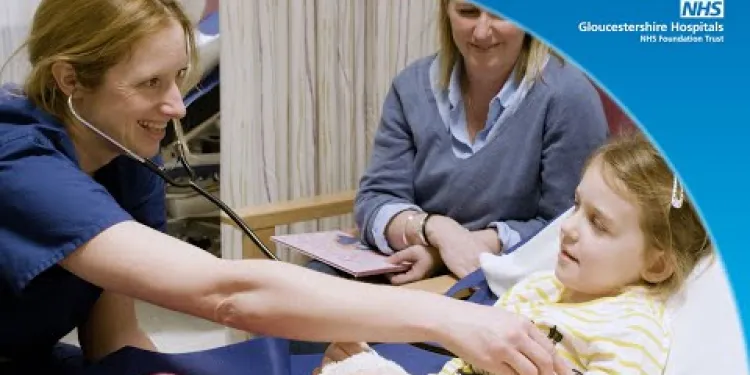
Having an operation at the Children’s Centre
Relevance: 28%
-

Children's Vaccination Schedule
Relevance: 27%
-

What are the common symptoms of lupus in children?
Relevance: 27%
-

What causes lupus in children?
Relevance: 27%
Understanding Progress Measurement for SEND Children in the UK
In the UK, the progress measurement for children with Special Educational Needs and Disabilities (SEND) is a robust and multidimensional process. It ensures that all children receive the support they need to thrive academically and personally. This process is tailored to address the diverse needs of SEND children and encompasses various strategies and tools.
Individual Education Plans (IEPs)
One of the primary tools used to measure progress for SEND children is the Individual Education Plan (IEP). An IEP is a documented plan designed specifically for each child, outlining their specific needs, goals, and the support necessary to achieve these objectives. Teachers, alongside specialists like educational psychologists and therapists, regularly review and update IEPs to track and accommodate the child’s progress and changing needs.
Use of Assessments and Observational Data
Schools employ a combination of formal assessments and observational data to measure progress. Traditional assessments might include adapted versions of standardized tests, while observational data involves teachers and staff recording and evaluating a child's performance in day-to-day activities. This dual approach allows educators to gather a comprehensive view of a child's development in academic and social contexts.
Progress Monitoring Tools
Various progress monitoring tools are employed to aid in assessing SEND students. Tools like PIVATS (Performance Indicators for Valued Assessment and Targeted Learning) are used to provide a detailed evaluation framework for skills across different levels of learning. These tools allow educators to identify specific strengths and areas for improvement, offering targeted interventions where necessary.
Collaboration with Parents and Carers
Collaboration between schools and parents or carers is crucial in measuring and supporting the progress of SEND children. Regular meetings and communication ensure that parents are kept informed of their child’s progress and can participate actively in setting attainable goals. This collaborative approach ensures that the child receives a coherent support structure both at school and home.
Role of Educational Psychologists and Specialists
Educational psychologists and other specialists play a significant role in the progress measurement process. They conduct assessments to understand the child's specific needs better and recommend strategies to support their learning and development. Their expertise ensures that all aspects of a child's development are considered and addressed effectively.
Ensuring Holistic Development
Measuring progress for SEND children goes beyond academic achievement. It also focuses on their emotional, social, and behavioural development. Schools use personalized targets that cater to developing life skills, ensuring that SEND children are equipped for future challenges beyond formal education. This holistic approach is vital for preparing them for a fulfilling and independent life.
Conclusion
In summary, measuring progress for SEND children in the UK involves a comprehensive approach that combines individual plans, assessments, collaborative efforts, and specialist input. This tailored approach ensures that all aspects of a child's development are taken into account, facilitating meaningful progress and a supportive learning environment.
How We Check Progress for SEND Children in the UK
In the UK, we have a special way to help children with Special Educational Needs and Disabilities (SEND) learn and grow. We make sure every child gets the help they need at school and in life. We use different tools and methods to do this.
Individual Education Plans (IEPs)
An Individual Education Plan (IEP) helps us see what each SEND child needs. It is like a guide made just for them. The IEP has their goals and the support they need to reach them. Teachers and specialists, like school psychologists, check the IEP often to make sure it still helps the child.
Using Tests and Watching Kids
Schools check how children are doing by using tests and watching them. Sometimes, tests are changed a bit to make them fair for SEND children. Teachers also watch how children do things every day. Both these ways help us understand how a child is learning and growing.
Special Tools to Check Progress
We use tools like PIVATS to look closely at what SEND children can do well and where they might need more help. These tools help teachers know exactly what each child needs to learn better.
Working with Parents and Carers
It’s important for schools to work with parents and carers. Schools have regular meetings to talk about the child’s progress. Parents can help set goals, so the child gets good support both at school and home.
Help from Specialists
Specialists like educational psychologists help us understand a child’s needs. They tell us what can help the child learn and grow. Their advice is important to make sure we think about everything a child needs.
Helping Kids in All Areas of Life
We care about more than just schoolwork. We also help SEND children with their feelings, how they get along with others, and other life skills. This helps them get ready for the future and live a happy life.
In Conclusion
Checking how SEND children are doing in the UK is all about using a lot of different tools and working together. This way, we can help children grow in every way and make sure they have a supportive learning environment.
Frequently Asked Questions
What is SEND?
SEND stands for Special Educational Needs and Disabilities. It refers to children who have learning difficulties or disabilities that require special educational provision.
How is progress for SEND children typically measured?
Progress for SEND children is typically measured using Individual Education Plans (IEPs) with specific goals and regular assessments to track achievements and development.
What are Individual Education Plans (IEPs)?
IEPs are documents that outline tailored educational goals and strategies designed to meet the unique needs of each SEND child, including ways to measure progress.
Do SEND children follow the same curriculum as other students?
SEND children may follow the same curriculum with adaptations, or they might follow a modified curriculum specifically designed to meet their needs.
What types of assessments are used to measure progress in SEND children?
Assessments may include teacher observations, standardized tests with accommodations, formative assessments, and performance-based evaluations.
How often is progress reviewed for SEND children?
Progress for SEND children is typically reviewed termly or as outlined in their IEP, ensuring timely adjustments to their educational plans.
Who is involved in measuring progress for SEND children?
Progress is measured by a team of professionals, including teachers, special educators, school psychologists, therapists, and parents.
What role do parents play in measuring progress for SEND children?
Parents are integral to the process, providing insights and observations from home, and actively participating in meetings to discuss and adjust their child's IEP.
How are achievements celebrated for SEND children?
Achievements are celebrated through positive reinforcement, awards, personal acknowledgements, and sometimes adjustments to goals to reflect their growth.
What happens if a SEND child is not making expected progress?
If progress is not as expected, the educational team will reassess the strategies and goals in the child's IEP and make necessary adjustments.
Are there specific benchmarks for SEND children's progress?
Benchmarks are often individualized, focusing on personal growth, skill acquisition, and developmental milestones rather than comparison with peers.
Can technology help in measuring progress for SEND children?
Yes, technology like educational software and apps can provide real-time progress tracking and facilitate personalized learning experiences.
How important is the role of communication in measuring progress for SEND children?
Effective communication among educators, therapists, parents, and students is crucial in making informed decisions and adjustments to learning plans.
Is emotional and social development measured alongside academic progress for SEND children?
Yes, emotional and social development is often a key area of focus in IEPs to ensure a holistic approach to each child's education.
How do schools ensure consistency in measuring SEND children's progress?
Consistency is maintained through regular training of staff, standardized processes, and clear documentation of goals and progress.
What is the role of external professionals in measuring progress for SEND children?
External professionals like therapists, psychologists, and medical practitioners may offer additional assessments, recommendations, and support.
Are SEND children's progress reports shared with the child?
When appropriate, progress reports can be shared with the children to involve them in their own learning journey and celebrate their successes.
How do schools address diverse needs when measuring progress for SEND children?
Schools customize strategies and assessments to cater to the diverse needs of SEND children, often involving a multidisciplinary approach.
How is progress toward independent living skills measured for SEND children?
Progress in independent living skills is measured through practical assessments and observations in daily living scenarios, integrated into the IEP.
What is the ultimate goal of measuring progress for SEND children?
The ultimate goal is to support each child in reaching their full potential, ensuring they gain the skills and confidence needed for future success.
What is SEND?
SEND stands for Special Educational Needs and Disabilities.
It means that a child might need extra help to learn in school.
Here are some ways to help:
- Use simple words and sentences.
- Speak slowly and clearly.
- Use pictures to explain things.
- Give more time to finish work.
- Use tools like tablets or computers.
SEND means Special Educational Needs and Disabilities. It is about children who need extra help to learn because they have learning problems or disabilities.
How do we check how well SEND children are doing?
We check to see how SEND children are learning and growing. Here’s how we do it:
- Teachers look at their work and see how much they understand.
- We talk to the children and see how they feel about their learning.
- We might do some tests to see what they know.
- We set small, easy goals for them to reach.
- We talk to their parents to see how they are doing at home.
If you need help understanding, here are some tips:
- Ask a teacher or helper to explain things to you.
- Use pictures or drawings to help understand better.
- Take your time and ask questions if you don’t understand.
We check how SEND children are doing by using special plans called Individual Education Plans (IEPs). These plans have clear goals, and we regularly check how the children are doing to see their progress and achievements.
What are Individual Education Plans (IEPs)?
An Individual Education Plan, or IEP, is like a special learning plan for a child. It helps teachers know how to help the child learn best.
Each child is different. Some children learn in different ways or need extra help. An IEP is made just for that child.
Here are some tools and tips that can help:
- Ask your teacher or helper if you do not understand something.
- Use pictures or drawings to help explain things.
- Take small breaks when you need to rest.
- Practice with games or apps that make learning fun.
IEPs are special plans for children with special needs. They show what goals the child should reach and how to help them learn. The plans also have ways to check how well the child is doing.
Do SEND children learn the same things as other students?
SEND means Special Educational Needs and Disabilities. These children have different learning needs.
SEND children might learn the same things as other students, but in a way that helps them more. They may use tools like pictures, videos, or special computers to learn better.
Teachers try to make sure all children learn what they need. They might change how they teach to help SEND children understand more easily.
If you have questions about how a SEND child learns, you can talk to their teacher or the school for more information.
Children with SEND might learn the same things as other children, but the lessons can be changed a little to help them. Sometimes, they have a different plan to learn what is best for them.
How do teachers check how well SEND children are doing?
Teachers use different ways to see how well children with special educational needs and disabilities (SEND) are learning. These are called assessments.
Some things they might do include:
- Watching how the child plays and learns in class.
- Talking with the child to ask questions and hear their ideas.
- Using tests or quizzes to see what the child knows.
- Checking the child's work, like drawings or writing, to see what they can do.
Tools that can help are:
- Using picture cards to help children understand questions.
- Letting children use computers or tablets to do their work.
- Giving children more time to finish their tasks.
Teachers can look at your work to see how you are doing. There are also special tests that give everyone extra help to make it fair. Teachers might give shorter tests to see what you know. You might also show what you've learned by doing projects or other activities.
How often do we check on SEND children's progress?
We check on SEND children often. We make sure they are learning well and getting the help they need.
We talk to their teachers and parents to see how they are doing. We might do this every term, which is about three times a year.
If you need help understanding, you can:
- Ask someone you trust to explain it to you.
- Use pictures or charts to see their progress.
We check on how well children with SEND are doing in school every term. We use their Individual Education Plan (IEP) to see if they need any changes to help them learn better.
Who helps check how SEND children are doing?
Some people help see how well children with SEND (Special Educational Needs and Disabilities) are doing in school. These people work together to make sure the children get the help they need.
- Teachers: They see what children learn and how they do in class.
- Parents: Moms and dads talk with teachers about what their child is good at and what they find hard.
- SENCo: This special teacher helps make plans to support children with SEND.
- Helpers: Sometimes, other people like teaching assistants help in the classroom too.
All these people talk and work together to make school better for children with SEND. Tools like picture cards or easy word books can help them learn. It's important to check how children are doing so everyone knows how to help them best.
Progress is checked by a team of helpers. This team has teachers, special helpers, school psychologists, therapists, and parents.
How can parents help check progress for children with SEND?
Parents help see how their child is doing in learning and life. They can share what they notice with teachers. This helps everyone understand the child better.
Here are some tools and ways to help:
- Talk with teachers: Parents can have regular chats with teachers to share ideas and updates.
- Use a diary: Write down little things about progress at home to share with the school.
- Apps and tools: Use apps that help track and note what the child is learning.
- Set goals together: Parents and teachers can set small, clear goals for the child.
When parents and teachers work together, it helps the child learn and grow better.
Parents are very important. They help by sharing what they notice at home. They also join meetings to talk about their child's learning plan and make changes if needed.
How do we celebrate when SEND children do something good?
When you do something good, we like to celebrate! We say nice things to make you feel proud, give you awards or prizes, and let everyone know what you did. Sometimes, we make new goals to show how much you have learned.
If reading is hard, try using tools like reading apps that read the text out loud. Take breaks if you need them.
What if a SEND child is not doing as well as expected?
If a child with Special Educational Needs and Disabilities (SEND) is not doing as well as we thought, we can help.
Here are some ways to help the child:
- Look at their learning plan and see if it needs to change.
- Talk to the teachers and ask for their advice.
- Use special tools, like picture cards or simple apps, to help with learning.
- Have meetings with parents to find the best way to support the child.
Remember, it is important to keep trying different things to help the child learn and grow.
If things are not going well, the school team will look at the plans for the child again. They might change some things to help the child do better.
Are there goals for how SEND children should learn and grow?
SEND means Special Educational Needs and Disabilities. These are children who may need extra help to learn.
There are goals to see how SEND children are learning and growing. These goals help teachers know if children are doing well or need more help.
If you find this hard to understand, ask an adult or teacher to explain it to you. Using pictures or videos can also help you learn better.
Benchmarks are goals set just for you. They help you see how you are learning and growing. These goals focus on what you can do and what you are learning. They are not about comparing yourself to others.
Can technology help us see how SEND children are doing?
Technology can help us watch how children with special education needs and disabilities (SEND) are learning and growing. It can show teachers and parents what children are good at and what they need help with.
Here are some ways technology can help:
- Using computers and tablets for learning games.
- Apps that help with reading, writing, and math.
- Tools that talk and help children understand better.
- Videos and pictures to make learning fun.
Parents and teachers can use these tools to help SEND children learn and see their progress. It's like having a special friend who helps you learn!
Yes, technology like learning computer programs and apps can help track how you are doing and make learning just right for you.
Why is talking and sharing important for knowing how SEND children are doing?
It is important for teachers, therapists, parents, and students to talk and listen to each other. This helps everyone make good choices and change learning plans if needed.
Do teachers check feelings and friend-making for SEND kids too?
Yes, we often focus on helping kids with their feelings and making friends in their IEP. This helps each child learn in a whole way.
How do schools check SEND children's progress fairly?
Schools want to make sure they check every child's progress in the same way, even for children who need extra help, called SEND children.
Here are some ways schools do this:
- Lesson plans: Teachers make special lesson plans that help SEND children learn step by step.
- Regular check-ups: Teachers check often to see how the children are doing.
- Sharing information: Teachers and parents talk to each other about what the children need.
- Using tools: Computers and other tools can help children learn.
If you want, you can use a chart or draw a picture to help remember.
We keep things the same by doing a few things:
- We train our team often.
- We follow the same steps every time.
- We write down what we want to do and how we are doing it.
You can use pictures or make a checklist to help remember these steps.
How do outside helpers check progress for children with SEND?
Outside helpers are people like doctors, therapists, or special teachers.
They help check how children with SEND (Special Educational Needs and Disabilities) are doing.
These helpers use different tools and tests. They see what the child can do and what they need help with.
Parents, teachers, and these outside helpers talk to find the best ways to support the child. They work together to make a plan.
Showing pictures or using games can help children understand what they are learning.
Outside helpers like therapists, psychologists, and doctors can give extra tests, advice, and help.
Do SEND children get to see their progress reports?
Sometimes papers that show how SEND children are doing in school are given to the child. This can help them know what they are doing well and what they can work on.
Teachers and parents can talk to the child about the report. They can explain it in a simple way.
If a child doesn’t understand the report, they can use pictures or stories to help explain. These are tools that help make things easier to understand.
It can be a good idea to share progress reports with children. This helps them be part of their learning and celebrate when they do well.
How do schools help all children, including those with SEND, get better at learning?
Schools want to help every child learn and do well. Some children have special needs, called SEND. This means they might learn in different ways.
To help these children, schools:
- Talk to their families to understand the child's needs better.
- Use special tools or learning games to make learning fun and easier.
- Have teachers who know how to help children with different needs.
- Check how each child is doing to help them learn more every day.
These steps help all children get better at learning! If you need more help, your teacher or family can guide you.
Schools create special plans and tests to help SEND children learn better. They often work with different experts to make sure every child gets what they need.
How do we check progress in learning life skills for SEND children?
We want to help SEND children learn skills to live independently. To see how they are doing, we check their progress. Here is how we do it in simple steps:
- Set easy, clear goals. What do we want the child to learn? For example, brushing their teeth or getting dressed.
- Watch and note what the child can do now.
- Help the child learn in small steps.
- Use games and fun activities to teach.
- Check how much better the child is doing after some time.
- Talk with parents and teachers to share ideas.
Support tools:
- Use pictures to show each step of a task.
- Make a chart to track progress together.
You can check how well someone is doing with living on their own by watching them do everyday tasks. These checks are part of a special plan called the IEP.
Why do we check how well SEND children are doing?
We check because we want to help them learn and do their best.
It helps us know what they need to learn better.
We can use things like pictures or stories to help understand their progress.
We want to help every child do their best. We want them to learn new things and feel sure of themselves. This will help them do well in the future.
Useful Links
- Ergsy carfully checks the information in the videos we provide here.
- Videos shown by Youtube after a video has completed, have NOT been reviewed by ERGSY.
- To view, click the arrow in centre of video.
- Most of the videos you find here will have subtitles and/or closed captions available.
- You may need to turn these on, and choose your preferred language.
- Go to the video you'd like to watch.
- If closed captions (CC) are available, settings will be visible on the bottom right of the video player.
- To turn on Captions, click settings .
- To turn off Captions, click settings again.
More Items From Ergsy search
-

How is progress measured for SEND children?
Relevance: 100%
-

What are SEND children?
Relevance: 75%
-

Who are SEND children?
Relevance: 70%
-

Do SEND children attend mainstream schools?
Relevance: 68%
-

What support is available for SEND children in schools?
Relevance: 63%
-

What role do teachers play in supporting SEND children?
Relevance: 62%
-

Can SEND children access extracurricular activities?
Relevance: 61%
-

What support is available outside of school for SEND children?
Relevance: 59%
-

How can schools create an inclusive environment for SEND children?
Relevance: 57%
-

Can SEND status change over time?
Relevance: 50%
-

How are parents involved in the SEND process?
Relevance: 50%
-

Are there specific laws governing SEND in schools?
Relevance: 47%
-

Who is responsible for assessing SEND needs?
Relevance: 47%
-

What does SEND stand for?
Relevance: 45%
-

What are some common misconceptions about SEND?
Relevance: 44%
-

How do funding and resources affect SEND support?
Relevance: 42%
-

What are some common types of SEND?
Relevance: 41%
-

How do I send books or magazines?
Relevance: 40%
-

Can I send money to an inmate?
Relevance: 39%
-

How can I track my walking progress?
Relevance: 36%
-

Why does my email appear to be sending spam?
Relevance: 36%
-

What items can I send to someone in prison?
Relevance: 36%
-

How does dementia progress over time?
Relevance: 35%
-

How can parents advocate for their SEND child?
Relevance: 34%
-

What are the career progression opportunities for NHS nurses?
Relevance: 32%
-

Dyspraxia Children: How to Help
Relevance: 32%
-

Can lifestyle changes impact motor neurone disease progression?
Relevance: 32%
-

How can I identify if my child has SEND?
Relevance: 31%
-

What is the typical progression of Marburg virus disease?
Relevance: 31%
-

Is tooth decay common in children?
Relevance: 30%
-

What is the SENCO's role in a school?
Relevance: 29%
-

Helping Children With Co-ordination Difficulties
Relevance: 29%
-

Can Wegovy be used by children?
Relevance: 28%
-

Is Baxdrostat suitable for children?
Relevance: 28%
-

What is lupus in children?
Relevance: 28%
-

Lupus in children | NHS
Relevance: 28%
-

Having an operation at the Children’s Centre
Relevance: 28%
-

Children's Vaccination Schedule
Relevance: 27%
-

What are the common symptoms of lupus in children?
Relevance: 27%
-

What causes lupus in children?
Relevance: 27%


